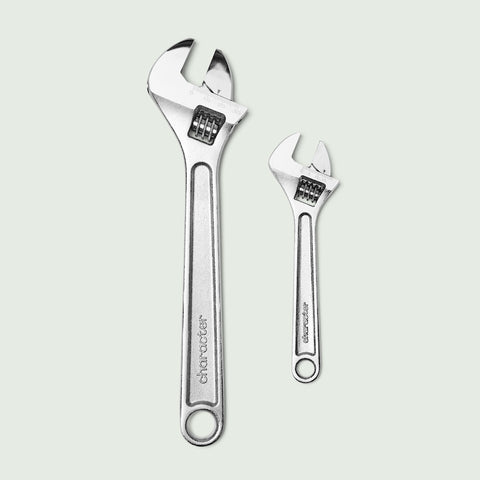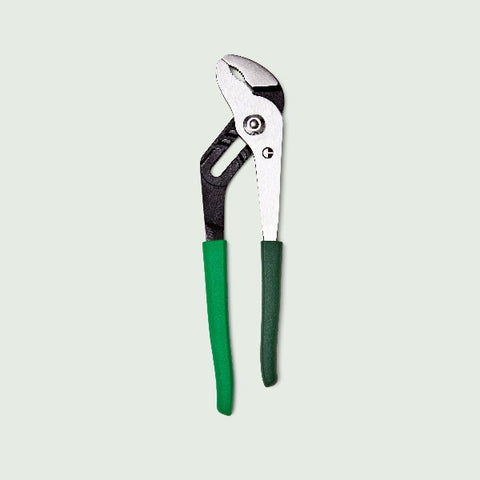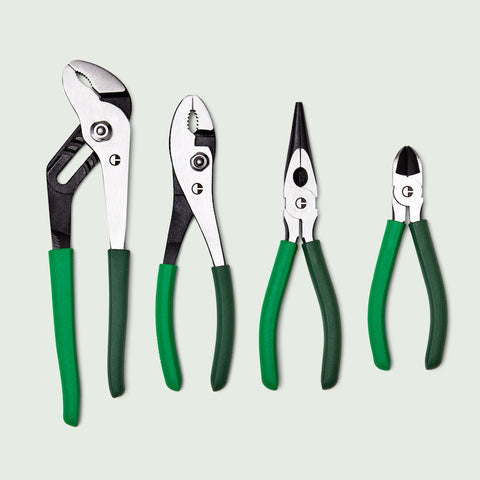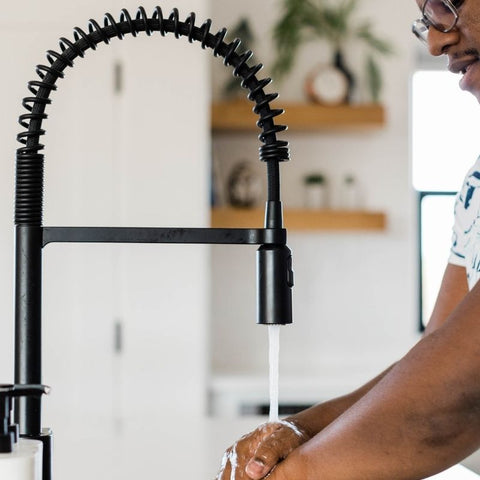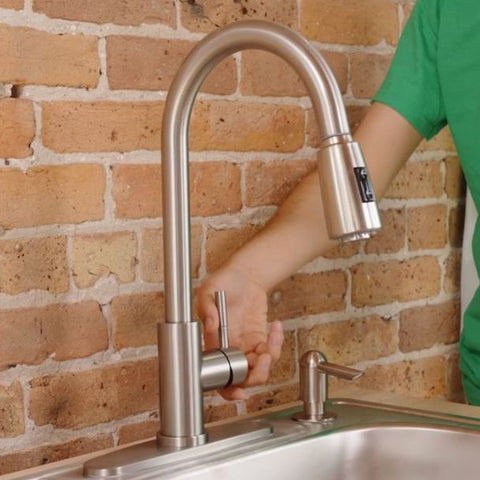
Photography by Hapny
This article was co-authored by Priya, founder of Hapny, a modern cabinet hardware brand. All imagery is courtesy of Hapny.
The right hardware can completely transform the look of your space — your kitchen, bathroom, or living room built-ins — or lend your personal style to furniture like a credenza, side table, or dresser. But how do you choose the right hardware?
Here are the main considerations:
- Type of hardware
- Design approach
- Finish and hue
- Size
- Hardware Type -
Choose between knobs or pulls


First, decide if you want to use knobs, pulls, or both in your space. Here are tips to help you decide:
Cabinet Knobs:
- Come in many shapes (round, square, oval, t-knob, etc)
- Generally smaller and less expensive than pulls
- Easier to install than pulls since there is only one screw hole and less measurement involved
Cabinet Pulls (or handles):
- Traditionally a linear shape with stems at or near either end
- Generally larger and pricier than knobs
- Come in many center to center lengths (the distance between the center of one screw hole and the other screw hole)
- Easier to grip than knobs since they have more surface area (better for heavier drawers or doors)
- Installation is slightly more involved due to varying center to center lengths
Once you have that figured out, you can determine which design approach you like best. Here are two main categories to consider.
- Design approach -
Determine what vibe you're going for
Traditional Spaces: The general rule in traditional spaces is knobs on cabinet doors and pulls on cabinet drawers. There are use cases in which this is not followed - baseboard cabinets (especially in kitchens and bathrooms) often use pulls, bigger drawers sometimes have two knobs on either end rather than one long pull, extra small drawers work better with knobs, etc.
Modern Spaces: In more modern or transitional spaces, you can use knobs and pulls interchangeably. Many people opt for a singular “all knobs” or “all pulls” look for visual simplicity and cohesion. You can also play with the orientation of pulls, placing them horizontally or vertically depending on cabinet use and design preferences.
- Finish & Hue -
Choose what style your hardware will be
Once you’ve picked a general direction, you can decide which finish and hue works well for your space and style.
When it comes to deciding what hardware finish to use, one consideration is your cabinet or drawer color. If you want hardware to pop in your space, choose a finish that is in stark contrast to your cabinet color (think matte black hardware on white cabinets, or satin brass or polished chrome hardware on navy cabinets).
If you want your hardware to feel more understated, match your finish tones with your cabinet undertones. Think venetian bronze or matte black hardware on oak or wood doors.
For kitchens and bathrooms, there are other considerations like matching to your appliances and existing fixtures.
Popular Finish Types
| FINISH | DETAILS |
|---|---|
| Matte or Flat | Matte finishes are not reflective and have little to no gloss. They are meant to absorb light rather than reflect it. Because of this, they are good at hiding fingerprints and smudges and are popular for high-use areas like kitchens and doors. |
| Satin or brushed | Satin finishes are mildly reflective and have some gloss. If you look closely, you can see small brush strokes in your pieces which come from the manufacturing process of this finish. Satin finishes are designed to be softer in appearance and diffuse light well, which helps hide fingerprints, smudges, and water spots (similar to Matte finishes). |
| Polished | Polished finishes are shiny, bright, and reflective like a mirror. Unlike Matte and Satin finishes, Polished finishes tend to show fingerprints, smudges, and water spots easily, so keep that in mind when you are considering where to install them. |
Popular Hues
Matte Black - This is a true neutral black with low sheen. A versatile option for neutral or colorful cabinetry. For kitchens, Matte Black is a great option to pair with stainless steel appliances for a clean look.
Satin Brass - This hue has gold, warm undertones with a light sheen. This is a classic option in any space and pairs well with both warm-toned woods and bold colors.
Satin Nickel - This hue has silver, warm undertones with a light sheen. This is a timeless finish that complements most stainless steel appliances and silver fixtures, so it’s a great choice for kitchens.
Polished Nickel - This is a reflective warm silver with yellowish-brown undertones. This pairs well with more neutral colors like white, cream, and gray, but it also offers a bold, mirror-like pop with all colors.
Polished Chrome - This hue is a reflective bright, cool silver with blue undertones. This finish often complements tapware, shower fixtures, handrails, and more, so it’s a great choice for bathrooms.
Venetian Bronze - This is a deep brown base with copper undertones and brushed detailing that varies from piece to piece. Depending on the design, there can be brighter copper accents that shine through. This finish coordinates well with other darker fixture finishes and colors in the space.
Here's a handy diagram that illustrates classic to modern approaches and different hues.
- Size -
Take measurements and choose your size
Once you've determined the look of your hardware, it’s time to find the actual pieces you like and buy them in the correct size.
Cabinet and furniture doors and drawers come in different heights and lengths, so the “standard” hardware size can vary for each space and piece of furniture. An industry rule of thumb to follow is to use a pull length that is approximately ⅓ of the cabinet door length or cabinet drawer width.
Here are some tips for how to measure for both doors and drawers:
For Drawers
- For small drawers <12” wide, we recommend one 3-4” length pull or one 1” diameter knob.
- For medium drawers between 12” - 24” wide, we recommend one 4-8” length pull or one 1” - 1.5” diameter knob.
- For large drawers >24” wide, we recommend one 8” or longer pull, two smaller pulls centered within the left and right hand thirds, or two 1” - 1.5” diameter knobs centered within the left and right hand thirds.
For Doors
- Knobs on cabinet doors are pretty straightforward. Most knobs are between 1” - 1 ½” in diameter. Using anything in this range is a safe bet for a classic look.
- For pulls, we recommend primarily sticking to one consistent size for cohesion. Start by accounting for your tallest door and use the ⅓ rule of thumb to get your starting point. We suggest not going smaller than 3 ¾” (96mm) center to center from a practical usability standpoint.
- Some exceptions to consistent pull sizes include if you’re mixing vertical and horizontal pulls (one can be longer than the other) or if you have doors that are significantly taller than the rest. At the end of the day, consistent pull lengths will help tie a space with varying cabinet sizes together, so try to keep them as close as possible as it makes sense.
